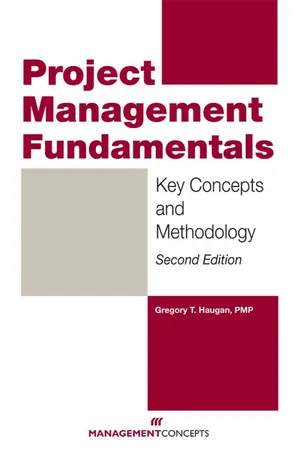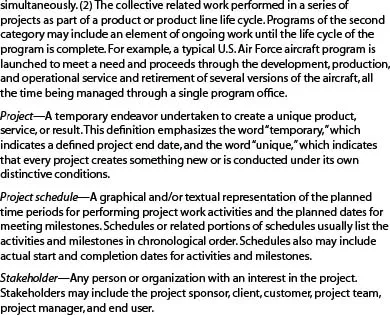
- 412 pages
- English
- ePUB (mobile friendly)
- Available on iOS & Android
About this book
Build on the Right Fundamentals for Project Management Success!
To achieve success in any endeavor, you need to understand the fundamental aspects of that endeavor. To achieve success in project management, you should start with Project Management Fundamentals: Key Concepts and Methodology, Second Edition.
This completely revised edition offers new project managers a solid foundation in the basics of the discipline. Using a step-by-step approach and conventional project management (PM) terminology, Project Management Fundamentals is a commonsense guide that focuses on how essential PM methods, tools, and techniques can be put into practice immediately.
New material in this second edition includes:
• A thorough discussion of agile project management and its use in real-life situations
• Detailed explanations of the unique factors involved in managing service projects
• An enhanced appendix on management maturity models
• A new appendix on project communications and social networking
• Expanded coverage of the triple constraints in PM, going beyond scope, schedule, and cost to include quality, resources, and risks
As a refresher for the experienced project manager or as a comprehensive introductory guide for the new practitioner, Project Management Fundamentals: Key Concepts and Methodology, Second Edition, is the go-to resource that delivers.
Frequently asked questions
- Essential is ideal for learners and professionals who enjoy exploring a wide range of subjects. Access the Essential Library with 800,000+ trusted titles and best-sellers across business, personal growth, and the humanities. Includes unlimited reading time and Standard Read Aloud voice.
- Complete: Perfect for advanced learners and researchers needing full, unrestricted access. Unlock 1.4M+ books across hundreds of subjects, including academic and specialized titles. The Complete Plan also includes advanced features like Premium Read Aloud and Research Assistant.
Please note we cannot support devices running on iOS 13 and Android 7 or earlier. Learn more about using the app.
Information
PART 1

Introduction and Overview
The Principles of Scientific Management, 1911, p. 62
THE PROJECT MANAGEMENT BODY OF KNOWLEDGE
KEY CONCEPTS OF PROJECT MANAGEMENT
KEY TERMS


THE BASIC PROJECT MANAGEMENT PROCESS
Table of contents
- Cover Page
- Half Title Page
- Title Page
- Copyright
- About the Author
- Dedication
- Table of Contents
- Preface
- Acknowledgments
- Part 1: Introduction and Overview
- Part 2: The Project Management Methodology
- Part 3: Applying the Methodology
- Part 4: Environmental and Facilitating Elements
- Part 5: Agile Project Management
- Appendix A: Management Maturity Models
- Appendix B: Advanced Project Management Concepts for Further Study
- Appendix C: Project and Program Life Cycles
- Appendix D: Types of Projects 341
- Appendix E: Project Communications Systems and Networking
- Bibliography
- Index